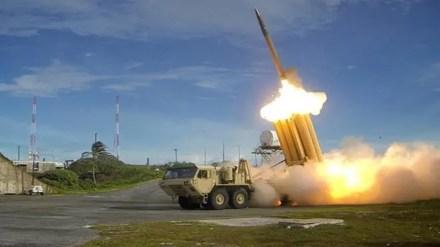Maj Gen (Dr) Ashok Kumar, VSM(Retd)
As the nations advance technologically , economically and educationally, invariably they focus on their military strength in all possible domains. This is done not only to defend one’s own national interests within the country but also outside the country. Invariably, some of these assets have dual use profile wherein one facet is utilised for the developmental activities while the second facet has military capability linkages.
Launch of satellites by various countries in the world has revolutionised space in an unprecedented manner. Today, not only the developed nations but also all the nations have the option to put their satellites in orbit for meeting their national requirements. Miniaturisation of satellites along with reducing costs of the launch have resulted in a large number of stakeholders putting their satellites into space. In addition to the Government organisations, there is a growing presence of private players as well in this field.
Large number of satellites in space with multiple sensors have given wide capabilities to the nations owning these satellites. Some of these are available on commercial basis as well wherein these can be hired on the charged basis. As countries have their exclusive satellites for the space exploration as well as leveraging it for the warfighting for employment of long range vectors (nuclear as well as conventional), they are also being seen as potential targets for any future conflicts. This has resulted in leading countries of the world to develop ASAT capabilities for utilisation against adversaries while protecting their own assets. ASAT capabilities have been possessed by four countries in the world so far to include the USA, Russia, China and india. It has been currently demonstrated by being used against their own satellites by shooting them down but since the capability has been developed and tested, it can be used against satellites of an adversary country should the need arise. Israel is also supposed to have developed this capability though its overt profile is not known.
Russia tested ASAT as early as in 1968 in some form and the capability was declared operational in 1973. It carried out the destruction of a satellite physically in Nov 21. As against this, the USA destroyed a physical satellite using ASM-135 which was released from a F- 15 Eagle aircraft in Sep 1985. China has been focussing more on weaponization of these capabilities as this capacity is seen to be an important constituent for a nation’s military power especially if it aspires to become a superpower at some date. With this aim in mind towards its aspirational growth, China used SC-19 missile system in Jan 2007 to shoot its own ageing satellite to prove and demonstrate this capability. SC-19 is using the DF- 21 missile system to execute these tasks. The focus of China is most pronounced in the field of ASAT weaponization as compared to any other country in the world. India has become the fourth country in the world to demonstrate this capability after Russia, USA and China wherein it carried out ASAT test in Mar 2019 as part of its ballistic missile defence as part of Mission Shakti.
Since ASAT capabilities are primarily leveraging the advanced missile technologies, the countries having developed missile technologies are likely to develop ASAT capabilities as well sooner than the later should they decide. ASAT has a wide range of applications to include defensive as well as offensive uses. While India has demonstrated this capability and showcased it as part of ‘ballistic missile defence’ , it remains predominantly a defensive orientation as of now.
Focus on hypersonic missiles
The nations are focussing on hypersonic missiles to carry forward their offensive intent. Hypersonic missiles travelling at Mach 5 and beyond speeds are difficult to detect and reach their targets much before the activation of their countermeasures being effective. There are a number of countries in the world to include Germany, Australia, North Korea, South Korea, Iran, Israel, Brazil,Japan and India which are actively pursuing this capability. As against this, Russia, USA and China have already developed these hypersonic missiles . In fact , there is reported use of these missiles during the ongoing Russia-Ukraine war. Though objective inputs about the efficacy of these missiles are not available, they appear to generate a lot of interest between the competing nations. It is a well known fact that China is attempting to become the superpower of the world wherein it wants to replace the USA from this pole position. In addition to multiple other fields, China has focussed substantially on development of hypersonic missiles where it appears to have moved ahead of the USA also in this particular area. The development has resulted in the USA re- focusing in this particular field of hypersonic missiles. An indirect race between the USA and China has already commenced.
Clubbing ASAT and hypersonic missiles has been done as both these are based on leveraging the advanced missile technology. While they may have distinct roles but there are overlapping areas as well in their employment. The changing geo-political landscape throws multiple challenges as well as the opportunities. Whether these capabilities are used for deterrence, defensive or offensive purposes will depend on the national interests of those countries who possess them.
There are multiple challenges as far as employment of these weapons are concerned. As technology further evolves, most of them may be efficiently handled. Whatever be the final profile, an era of star wars has already begun.
The author is a Kargil War Veteran. The officer superannuated from the appointment of MGGS (SD&WE) of HQ Eastern Command besides tenating the appointment of MD ECHS. He is a prolific writer, media commentator and defence/ strategic analyst. The officer is the visiting fellow of the CLAWS.
Disclaimer: Views expressed are personal and do not reflect the official position or policy of Financial Express Online. Reproducing this content without permission is prohibited
